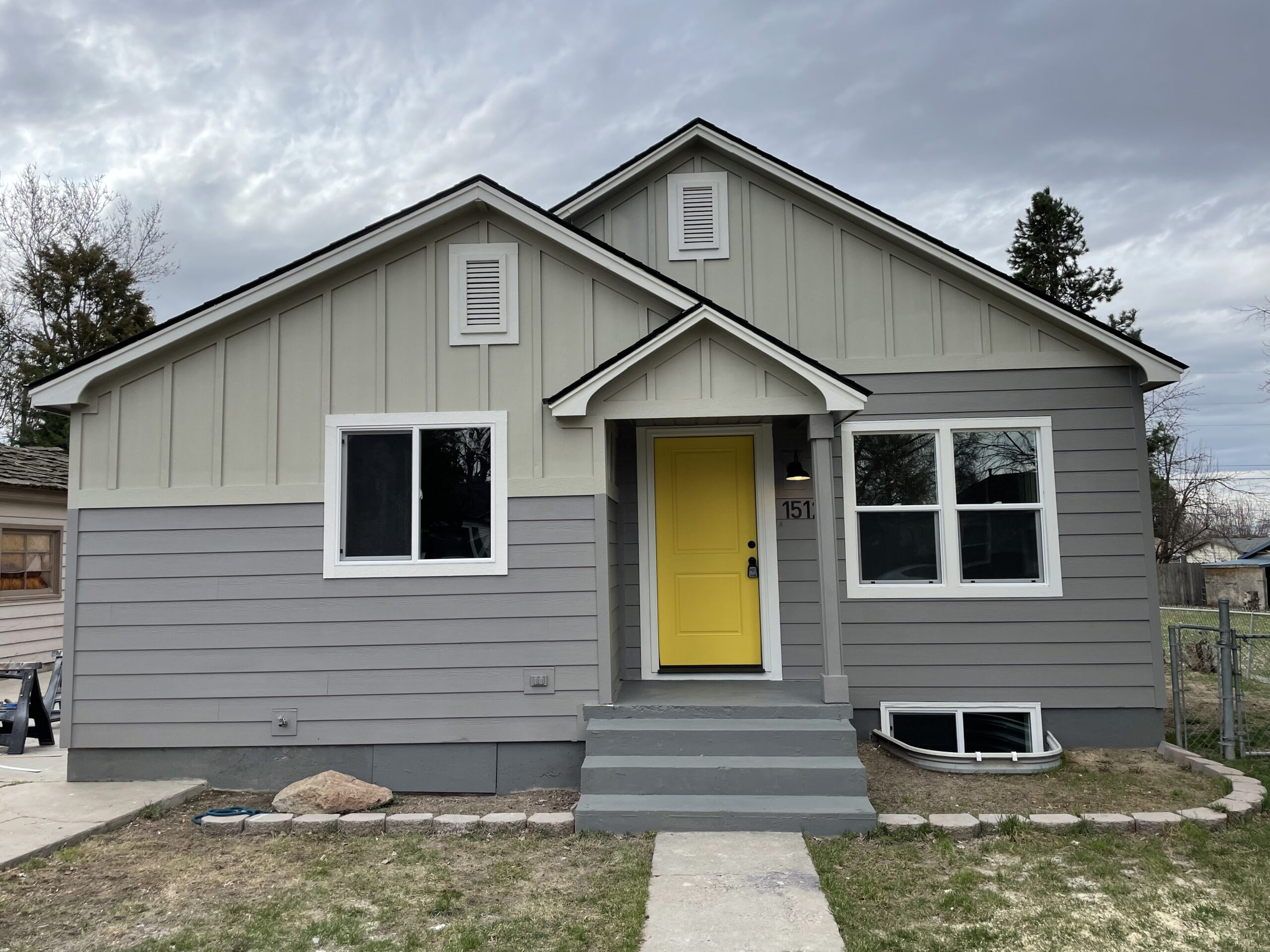Home vinyl siding is a popular choice for covering the exterior of a home.?It is a durable and low-maintenance synthetic material made from polyvinyl chloride (PVC). Vinyl siding is available in a wide range of colors and styles, making it easy to find a look that complements the style of your home. One of the main advantages of vinyl siding is its durability; it is resistant to wind, rain, and other weather conditions, and it does not rot or attract pests as wood siding can. It is also relatively easy to install and can be cut to fit the shape and contours of your home. In addition, vinyl siding requires minimal maintenance and can be easily cleaned with a hose or pressure washer.
Benefits Of Vinyl Siding
There are several benefits to using exterior siding for your home:
- Durability: Vinyl siding is resistant to wind, rain, and other weather conditions, and it does not rot or attract pests as wood siding can.
- Low maintenance: Vinyl house siding requires minimal maintenance and can be easily cleaned with a hose or pressure washer.
- Energy efficiency: Vinyl siding can help insulate your home and reduce energy costs by trapping air between the siding and the wall of your home.
- Cost-effective: Vinyl siding is typically less expensive than other siding options, such as brick or stone.
- Wide range of styles: Vinyl siding is available in a wide range of colors and styles, so you can find a look that complements the style of your home.
- Easy to install: Vinyl siding is relatively easy to install and can be cut to fit the shape and contours of your home.
- Long lifespan: With proper maintenance, vinyl siding can last for decades, making it a durable and cost-effective option for your home.
Choose The Right Vinyl Siding
When choosing?exterior siding?for your home, there are several factors to consider:
Style:?Choose a style that complements the architecture and design of your home. Many options are available, including traditional lap siding, shingle-style, and vertical and horizontal siding.
Color: Consider the color of your home’s exterior and choose vinyl siding colors that complement it. Remember that darker colors absorb more heat and may provide the home’s energy efficiency compared to lighter colors.
Quality:?Look for exterior siding made from high-quality materials with a thick gauge, which will be more durable and long-lasting.
Brand:?Research different brands and their reputations to find a vinyl siding manufacturer known for producing high-quality products.
Price:?Compare prices from different retailers to find the best deal on vinyl siding. Remember that the cheapest option may not always be the best quality, so it’s essential to find a balance between price and quality.
Proper Installation:?Consider whether you will hire a professional to install the siding or do it yourself. If you choose to do it yourself, ensure you have the tools and knowledge to install the siding properly.
Installation Process
The process for installing vinyl siding typically involves the following steps:
- Remove any existing siding: If you are replacing existing siding, you will need to remove it before installing the new siding. This may involve using a pry bar or power drill to remove nails or screws.
- Install a moisture barrier: A moisture barrier should be installed between the sheathing and the new siding to help prevent moisture from entering the wall of your home.
- Install furring strips: Furring strips may be needed to provide a flat surface for the siding to attach to if the wall of your home is not straight.
- Install corner and trim pieces: Install corner and trim pieces first, starting at the bottom and working your way up. Then the window trim pieces should be installed. These pieces help give the siding a finished look and protect the edges of the siding.
- Install the siding panels: Starting at the bottom, attach the siding panels to the wall using nails or screws. Ensure the panels are level and spaced correctly, and overlap them according to the manufacturer’s instructions.
- Install finishing touches: Once the siding is installed, add finishing touches, such as caulk around windows and doors and trim around the bottom of the siding.
Hb Siding?services professional installation of vinyl siding. It requires specialized tools and knowledge to do it correctly. However, if you are experienced in home renovations and have the necessary tools, it is possible to install vinyl siding yourself. We are happy to provide a?consultation.

Conclusion
Vinyl siding is famous for covering a home’s exterior due to its durability, low maintenance, and energy efficiency. It is also cost-effective and available in a wide range of styles and colors, making it easy to find a look that complements the style of your home. In addition, when properly installed, vinyl siding can last for decades, making it a durable and cost-effective option for your home.
Choosing the right vinyl siding for your home is essential, as it will be a significant part of your home’s exterior for many years. When choosing vinyl siding, consider the style, color, quality, brand, price, and installation. In addition, researching and comparing options can help you find the best vinyl siding for your needs and budget.
Overall, house siding is a durable, low-maintenance, and cost-effective option for covering the exterior of your home. If you are considering updating the siding on your home, consider the benefits of vinyl siding and how it could work.


